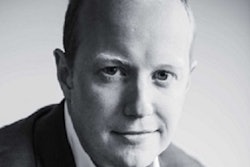
Most healthcare enterprises do a great job of managing radiology images, but things can get chaotic when it comes to images from outside radiology. A health system from Wisconsin found a cure in an application it developed to leverage its existing DICOM infrastructure to manage nonradiology images.
To bridge the gap between radiology and nonradiology studies in its enterprise, Marshfield Clinic Health System developed an application that supports the myriad workflows for ordering nonradiology exams and takes advantage of DICOM tools and systems already in place. At last week's Society for Imaging Informatics in Medicine (SIIM) meeting, attendees learned how the researchers did it.
The institution projects it will realize more than $125,000 in annual cost savings by being able to consolidate disparate archives, save staff time, and reduce the number of missed billing opportunities, according to presenter Dan Kayhart, a solutions analyst.
An enterprise imaging dichotomy
A large health system in northern and central Wisconsin, Marshfield Clinic Health System serves a mostly rural population and comprises more than 50 centers, 700 providers, and 86 specialties and subspecialties. It utilizes a wide variety of imaging, ranging from radiology to ophthalmology, photography, and point-of-care ultrasound, Kayhart said.
"We have over 80 point-of-care imaging devices currently under our management," he said.
The institution had an enterprise imaging dichotomy, however.
"We had a very robust imaging system for radiology, so of course we had accurate orders and DICOM Modality Worklist," he said. "[Image] quality was high, and [the images] were always linked to the report, and there was standardized access within the [electronic health record]."
But that wasn't the case for point-of-care imaging.
"We had people typing [patient information] in at the modality; sometimes we had people pasting an image onto a document or printing something out and then it gets scanned in," he said. We had "terrible metadata; sometimes we have the patient description and sometimes we don't. [The studies] were not always linked to providers or linked to the wrong facility."
Even worse, these images were stored in disparate systems, which limited access to the studies and generated significant cost for the health system, Kayhart said.
Bridging the gap
The health system sought to rectify the gap between radiology and nonradiology imaging by having one location to view all imaging within the electronic health record (EHR), with one shared archive and viewing system. The researchers also wanted the ability to link documentation to imaging and provide high-quality imaging in any "-ology" regardless of the modality, Kayhart said. In addition, they wanted to avoid interference with radiology processes and to collect robust metadata for every image.
Furthermore, they wanted to achieve these goals using existing tools such as DICOM, DICOM Modality Worklist, a vendor-neutral archive, practice management software, and a universal DICOM image viewer. The institution elected to develop its own application to support ordering of nonradiology images in a simpler way than is typically necessary for ordering radiology studies on a RIS.
Whenever possible, the order application would link to an existing event, but it wouldn't require it. Sometimes, for example, dermatologists may come in on a weekend to consult on a case, but that patient doesn't have an appointment.
"Not every interaction has an encounter link, so we wanted to make that [nonappointment ordering] available," Kayhart said.
It was important that the system interface with practice management software, ensuring that patient data are verified every time on every image, "so that people are no longer having to type information in, risking mistakes and risking a failure in verification," he said.
They also sought to use the concept of the care team to organize work, build custom lists, and keep the system simple to use.
"People work in care teams, and we really wanted to set up organizations of users in these care teams for various providers who could work together and could have their own specialized customized workflow," he said.
In addition, they wanted to allow nonradiology orders to be created on the system before or after the images are captured and archived.
Features
As a result, the institution developed the application to support multiple workflows. In an order-first workflow, users could create orders on the system with existing appointments if available. The application also supports nonappointment ordering.
For an image-first workflow, unsolicited images could be sent to the archive -- such as in urgent/emergent imaging cases -- and orders can be added to the system after the images are received. The system would then update and reprocess the study to the archive using DICOM C-store, he said.
In addition, the application supported the integration of medical photography into the enterprise imaging strategy. Secure photo capture and direct upload to the archive are now supported with vendor tools.
"That has been extremely popular," Kayhart said.
This improved enterprise imaging workflow should also position the institution well in the upcoming era of artificial intelligence, which will require detailed information and tags for all of the imaging that's performed, he said.
Saving time and money
The researchers estimate that the new application will yield annual savings of more than $125,000, due to time savings, consolidation of disparate archives, and a reduction in missed billing. For just photo studies alone, the application will save more than 800 hours of staff time each year -- assuming average savings of 2.5 minutes per photo study and 20,000 studies per year, Kayhart said.
One common access point is now available to enter all nonradiology imaging in the system, and users have the ability to manipulate images with viewer tools.
"We've also implemented a policy that requires any new imaging in the system to be reviewed by our team, so that we can make sure it's DICOM-compatible and is going to work with our solution, or that we have a workaround to DICOM-wrap the images," he said.
The new application also has led to higher image resolution, clarity, and sharpness in many cases, as well as improved capture quality, Kayhart said.
Challenges
The institution encountered some challenges in the process. For example, the universal viewer had to be updated in some ways to incorporate new filtering and hanging protocols as well as tools for viewing and marking up images.
"Those are some challenges we continue to work through, but we have worked through a number of those," he said.
It can also be a steep learning curve to accommodate a wide variety of workflows and figure out what each care area needs, Kayhart said.
"It really took some dedicated attention to understanding their requirements," he said.
Finally, it can be difficult to link all of the images to documentation such as an office or procedure note, Kayhart said.



















